Communication Nation® by The Children’s Hour
Exploring communication through media, languages, and community building

Communication Nation
Exploring communication through media, language, and community building
Communciation Nation is a free radio, podcast, and curriculum series produced by The Children’s Hour Inc. The series and accompanying curriculum explores various forms of communication through media, languages, and community building.
Our curriculum satisfies national and state education standards for students in 3rd through 6th grades, and will also be available on PBS Learning Media.
The objective of this series and its accompanying educational materials serves as tools for families and educators in supporting building of critical thinking skills and historical awareness, celebrating diverse cultural and linguistic identities, as well as promoting tolerance and empathy.
Find all the curriculum, audio, activities, teacher tips and more below.
Episode 1 - Speaking the Truth: Media Literacy & Misinformation
Broadcasting July 29 to August 4, 2024, Podcast releases August 4, 2024
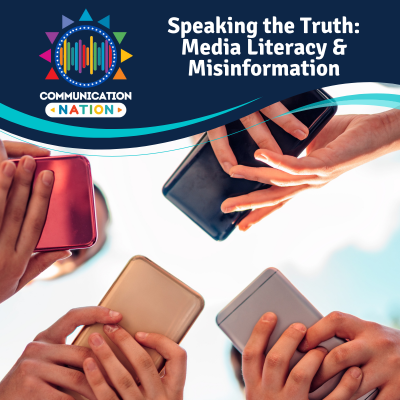
We can only have effective communication when we can trust our sources. In this first episode, we focus on media literacy with Eisha Buch from Common Sense Media, an organization that helps kids and families understand the media they use every day. Eisha explains that media literacy is all about thinking critically about the media we consume. This means asking questions about what we see, read, and hear to determine if it’s trustworthy and helpful. We dive deeper into the concept of media literacy by learning the difference between misinformation and disinformation. Everyone has a bias, and we learn how to look for bias in our media, and be aware of the sources in our media. Finally, we think about our own “media diet,” which is the amount and types of media we consume every day.
Speaking The Truth
Part one - Media Literacy
Speaking the Truth Part 1: Media Literacy
My Information Diet
Think about, write down, and share examples of media you interact with regularly including TV shows, movies, social media, advertisements, and magazines or newspapers. How does your information diet compare to others?
Part two - Misinformation
Speaking the Truth Part 2: Misinformation
Know Your Media Sources
To avoid the spread of false information and determine if a source is reliable, it is important to practice critical thinking. Choose a source of media that you have seen recently, such as from a social media or streaming account that you follow or subscribe to. As you review and research the media source, use the graphic organizer and checklist to help you analyze it.
Part Three - Bias
Speaking the Truth Part 3: Bias
Analyze and Compare Perspectives
We know that everyone has their own point of view. That’s their perspective of a situation, and it reflects the bias they hold. When you hear a story, look for the perspective of the author and consider if there is a bias that impacts how the story is told. This activity helps kids explore perspective in a story.
Episode 2 - Mother Tongues: Diversity of Spoken Languages
Broadcasting August 5 -11, 2024, Podcast releases August 11, 2024
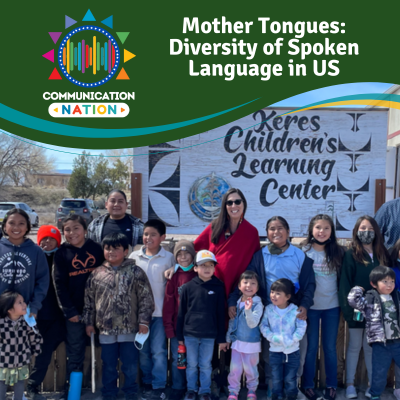
Communication Nation Episode 2, Mother Tongues explores some of the different languages people speak and why they are so important. Hosted by Katie Stone and featuring the TCH Kids Crew, this episode takes us on a journey to understand how our native languages, or mother tongues, shape our identity and culture. We meet Joanna Ho, an author who wrote a book called “Say My Name” which highlights the importance of pronouncing names correctly, as names carry deep meaning and respect for a person’s heritage. Then we go to Cochiti Pueblo in New Mexico to learn about how the Keres Children’s Learning Center is preserving the Keres language for future generations. We discover the challenges faced by indigenous languages and the efforts to keep them alive through education.
Mother Tongues: Diversity of Spoken Language
Part One - What's In A Name?
Mother Tongues Part 1: What's In A Name?
Who I Am?
Your identity is who you are as a person. Each person has a story and background that help make up who they are. Understand more about your own identity by classifying information about you in this activity for kids of all ages.
Part two - Saving America's First Languages
Mother Tongues Part 2: Saving America's First Languages
Preserving Community Assets
Your community consists of the people, places, ideas you are surrounded by, and what you value. Anyone can be part of multiple communities at the same time. Some may choose to be part of some communities, such as a club. Each one of us is also automatically a member of others, such as a school community. Within every community, there are many assets (useful and valuable resources) that strengthen communities. People can support their community by working to preserve or protect its assets. Learn more about our community assets in this fun activity.
Part Three - Preventing Extinction of Indigenous Languages
Mother Tongues Part 3: Preventing Extinction of Indigenous Languages
Oral Story Activity
How do stories come to be, and how are they passed along? In this activity, your challenge is to design a visual story that can be told orally (out loud) in any language. Think of a time when you or someone you know learned a life lesson. Share ideas with others and create a list, including at least one drawing.
Episode 3 - Other Voices: Nonverbal Communications
Broadcasting August 12 -18, 2024, Podcast releases August 18, 2024
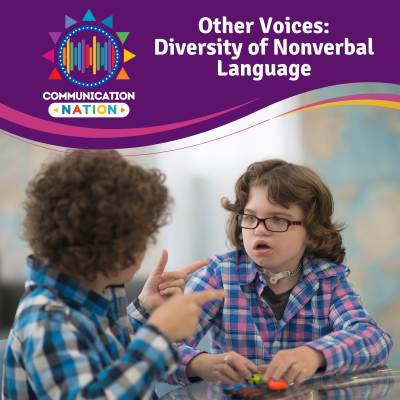
Our bodies speak. Communication Nation Episode 3, Other Voices explores the wide array of nonverbal communication, though our hands, gestures, and our bodies. Katie talks with Marci Laurel, a speech language therapist who teaches neurodivergent children and adults the skills of nonverbal communication. We also meet Brad Klein, a Child of Deaf Parents or CODA comedian, and his deaf parents Marty and Candy. In a conversation with our Kids Crew, we learn about sign language and deaf culture. Some people communicate using assistive technology devices, and many of us use voice to text technology to speed our writing. Rio Rancho Public Schools in New Mexico uses assistive communication technology in every classroom, and on all playgrounds. Tibbany Ho, the Assistive Technology Coordinator for the district explains how AT works, and why it helps everyone understand one another a little better.
Other Voices, Other Sounds
Part one - Nonverbal Communication
Other Voices Part 1: Nonverbal Communication
Emotion Charades
How well can you recognize what emotions look like? Try this game of Emotion Charades and see if you can describe, draw and act out five different emotions. Can you recognize the emotion of someone else when they act it out for you?
Part two - Sign Language & Deaf Culture
Other Voices Part 2: Sign Language & Deaf Culture
Nonverbal Communication Investigation
Can you recognize other people’s nonverbal communication? Find a place where you can safely and quietly watch other people in your community. Pay close attention to their faces, gestures, and body language. Write down your observations.
Sign Language is for Everyone
The Klein family told us that they wish everyone knew some sign language. It would make their lives much easier, and it’s a great way to communicate when you want to speak without using your voice. You can learn sign language online for free!
Check out these videos from ASL Kids.
Part Three - Assistive Technology
Other Voices Part 3: Assistive Technology
Make Your Own Communication Board
A communication board uses pictures and symbols to represent words and ideas. It can be printed or displayed in an open space or school area. A board is a great example of Alternative Assistive Communication (AAC), or the ways that someone communicates besides talking. Your challenge is to create an AAC Communication Board that will be used to help people communicate.
Episode 4 - Together We Can: Teambuilding
Broadcasting August 19-25, 2024, Podcast releases August 25, 2024
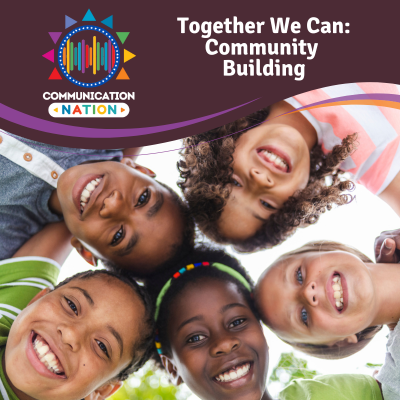
Communication Nation Episode 4, Together We Can explores how teambuilding happens with good communication skills. Combining all we have learned in our other episodes, our Kids Crew meet actor and theater educator Doug Montoya, who lead Katie and the kids in an improvisation workshop. By following some simple rules, we create a team dynamic using our words to make our group stronger. This episode explores other ways we use teambuilding to create community, including through sports. Throughout human history we have used fun and games to build strong communities that work well together. Katie teaches us about the traditional indigenous games of Pok-a-Tok from the Mayan people of Central America, and Incan Chasquis, plus the many games we have imported to the Americas from around the world.
Together We Can
Part one - The Art of Improv
Together We Can Part 1: The Art of Improv
Activity: Trust Me, I'm the Expert
Improvisation is the act of doing or making something up as you go along without planning ahead of time. For this game, it’s important to follow the rules of Improv to create a good scene.
In this activity, you will act as though you are an expert about what you’re talking about, even though you’re just pretending.
Part two - Staying Connected
Together We Can Part 2: Staying Connected
Making Connections
Try this common game that helps people have fun and connect with others. To get the most out of playing, it’s important to cooperate, be flexible, and try out different things. With teamwork and collaboration, you can create a fun experience.
Part Three - Community Building
Together We Can Part 3: Community Building
Play for a Purpose
Explore these questions: What are three different games and/or sports you like to play? What lessons did you learn, or what purpose did playing serve? What other skills or benefits do you gain? You may also include examples of games heard in the audio “Games We Play”, and using this information, see if you can complete the activity.
This series was produced by our Executive Producer, Katie Stone, with help from Senior Producer Christina Stella, and producers Gus Tafoya and Eli Henley. Chad Scheer provided live engineering at Outpost Performance Space. Lorraine Archibald wrote our learning guides. We also had support from 2024 Summer Intern Thaniel Lentz. These episodes were recorded at Outpost Performance space and the solar powered Sunspot Solar Studio in Albuquerque, New Mexico.
© 2024 The Children’s Hour Inc, All Rights Reserved
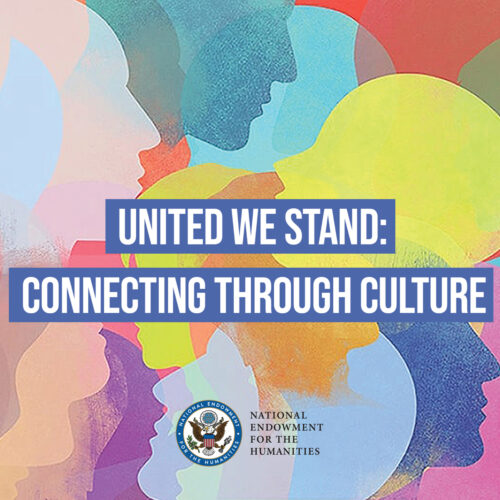
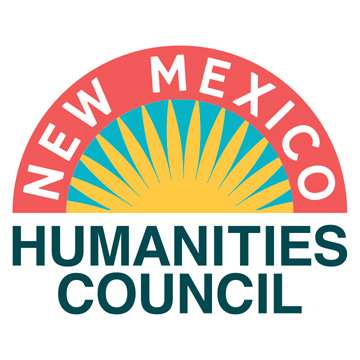
This program is made possible by funding from the National Endowment for the Humanities and the United We Stand Connecting Through Culture Initiative, and by the New Mexico Humanities Council. Any views, findings, conclusions, or recommendations expressed in this program do not necessarily represent those of the National Endowment for the Humanities or the New Mexico Humanities Council.
